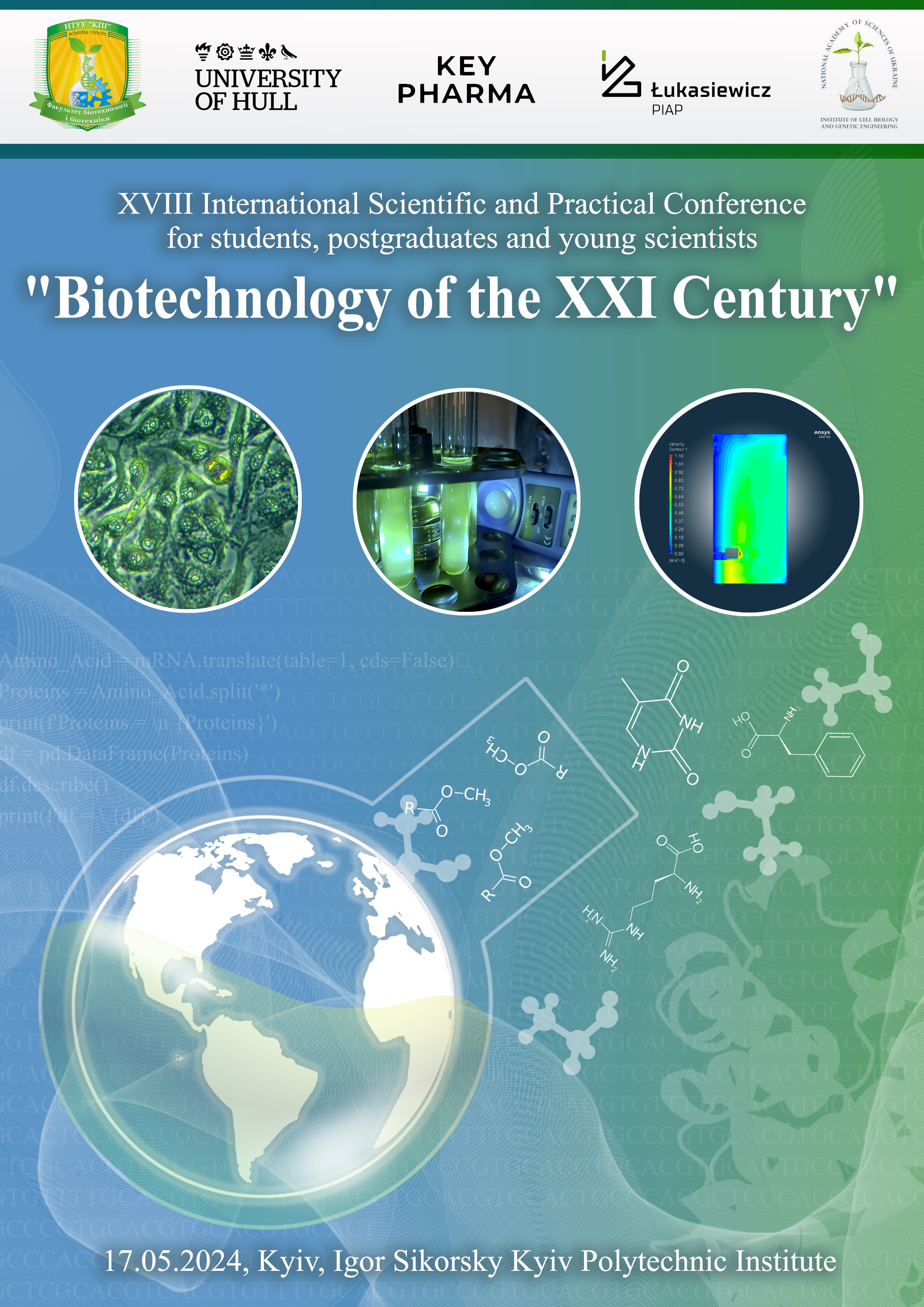ТЕХНОЛОГІЯ СТВОРЕННЯ НАДПРОДУЦЕНТА ІНТЕРФЕРОНУ ШЛЯХОМ КОНТРОЛЮ LAC-ОПЕРОНА У E. COLI
Ключові слова:
Escherichia coli, interferons, induction, genetic modificationАнотація
This article explores the diverse roles of interferons, their antiviral and antibacterial effects, as well as the technology that may enable the creation of a high-yield producer strain of E. coli BL21 (DE3). Genetic modification of this microorganism could increase the output of recombinant γ-IFN, offering economically efficient solutions for industrial needs.
Посилання
Маслянко Р., Левківський Д. Особливості функціонування системи інтерферону у неонатальних тварин. Науковий вісник ЛНУВМБТ імені С. Ґжицького. Львів, 2010. №3. С. 102–107.
Ю.Б. Кузьмінов. Роль інтерферонів у захисних реакціях організму. Актуальні проблеми профілактичної медицини : зб. наук. пр. Львів, 2014. С. 104–108.
Філон М.Ю. Автоматизація процесу контролю під час фармацевтичного виробництва інтерферону. Вісник СумДУ. Технічні науки. Суми, 2011. №2. С. 55–59.
Baolei J., Che O. J. High-throughput recombinant protein expression in Escherichia coli: current status and future perspectives. Open Biology. 2016. Vol. 6. No. 8. URL: http://dx.doi.org/10.1098/rsob.160196
Fisher D.I., Mayr L.M., Roth R.G., Expression Systems. Encyclopedia of Cell Biology, Academic Press. 2016. P. 54–65. DOI: 10.1016/B978-0-12-394447-4.10009-4
Nariyasu T., Tachibana I., Kazuyo T., Yamashita Sh. Boosting Auto-Induction of Recombinant Proteins in Escherichia coli with Glucose and Lactose Additives. Protein and Peptide Letters. 2021. Vol. 28. No. 10. P. 1180–1190. DOI: 10.2174/0929866528666210805120715
Leonor S., Guilherme S. L., Pereira Р., Mara G. F. Interferon-Based Biopharmaceuticals: Overview on the Production, Purification, and Formulation. Vaccines. 2021. Vol. 9. No. 4. URL: https://doi.org/10.3390/vaccines9040328
T. J. Shun, R. N. Ramanan, T. C. Ling. The role of lac operon and lac repressor in the induction using lactose for the expression of periplasmic human interferon-α2b by Escherichia coli. Annals of Microbiology. 2011. Vol. 4. DOI: DOI 10.1007/s13213-011-0394-3

